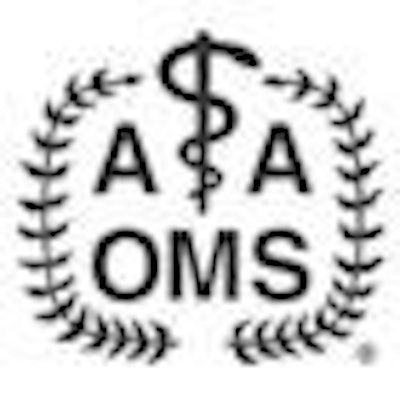
TORONTO - Oral and maxillofacial surgeons (OMSs) need to adapt quickly to technological change and work together to make sure healthcare reforms do not further chip away at reimbursement, if they are to successfully maneuver the challenges facing their field, according to a symposium at the recent American Association of Oral and Maxillofacial Surgeons (AAOMS) annual meeting.
Looking back over the past 30 years since he completed his residency, Jeffrey Stone, D.M.D., M.D., president of Lowell Oral Surgery Associates and a member of the OMS National Insurance Company's Risk Management Committee and Advisory Board, described the many changes he has witnessed over three decades and what this might mean for OMS going forward.
For example, the aging of practitioners: In 1974, 11.5% of practitioners were 55 years of age or older in 1974, and by 2006 this number had grown to 45%, according to data from the AAOMS and the ADA. There has also been a slow growth in the proportion of female OMSs to 6% in 2009, as well as an increase to 17% of OMSs with M.D. degrees and a surge to 84.7% of OMSs who have American Board of OMS certification.
Another trend has been the shift to a more businesslike approach to running practices. Dr. Stone said his practice jumped from three doctors and eight support staff members to four doctors and 23 support staff and other members of the team -- including a business lawyer and a practice-management consultant. In addition, there have been several major technological shifts, he noted. For example, CT plays a large role in diagnosing and treating patients today, and 3D imaging and treatment planning are also breaking through into routine clinical practice, he said, citing two articles in a recent issue of the Journal of Oral and Maxillofacial Surgery (2009, Vol. 67:10, pp. 2080-2092 and 2107-2114). And, of course, implants have revolutionized OMS.
"We often think we have a really bad situation for ourselves, for our organization, and for our specialty," said Dr. Stone. "But we've faced challenges in the past, and we're in a great period for our specialty. We have the satisfaction of helping our patients. So while we may not always get reimbursed adequately for what we do, there is a lot of satisfaction in what we provide for our patients."
Healthcare reforms and EMRs
Christopher Rorick, M.P.A., director of government relations at the law firm Bryan Cave in Washington, DC, provided an overview of the current government efforts in healthcare reform. Although it is not yet clear what form the changes will take, he noted, it appears likely that there will be a shift of more patients to Medicare, with the government becoming America's principal payer.
"If this happens, we need to make sure the infrastructure is in place so payments stay where they should be," Rorick said. "We need to let government know that universal coverage does not mean that a patient will be treated if a provider's not there to provide the care. So our job is to make sure payment rates remain at a level to make it worthwhile for OMSs to continue practicing."
The last speaker, Jeffrey Carter, D.M.D., M.D., head of the Oral Surgical Institute in Nashville, TN, described another major transition beginning to take place: electronic medical records (EMRs). He said that "in Nashville, the low-cost provider wins." And this means shifting to electronic record-keeping because it results in more efficient processing of patients and lower costs, he said.
Dr. Carter cited data from a 2007 survey of more than 23,000 Canadian physicians. Among the survey's findings were that EMR-based practices have 27.7% shorter wait times for urgent referrals than paper-based practices and can accept 29% more new patients. Staff members also spend 11% less time processing information from each patient's visit -- whereas those at practices with a paper-EMR mix spend 1% more time.
Dr. Carter also made the case for investing in the initial time and financial costs -- including annual maintenance fees that amount to approximately 20% of the initial cost of the system -- to adopt EMR based on his own "very positive" experience with making the transition. He and the other OMSs at the Oral Surgical Institute installed an EMR system in 1986 at all four of their practice locations and at a companion ambulatory surgery center (ASC) created in 1992. The system is patient-centric and has led to the creation of a very efficient patient-processing flow and a huge and highly mineable database, he said.
"Some examples of the behavioral changes that have occurred after we implemented EMR are that we now offer same-day surgery that has the same clinical outcomes of previous inpatient surgery, there is decreased total patient time in the office, and we can consistently plan treatment of high-risk and pediatric patients in the companion ASC with seamless records," Dr. Carter concluded.
Copyright © 2009 DrBicuspid.com















